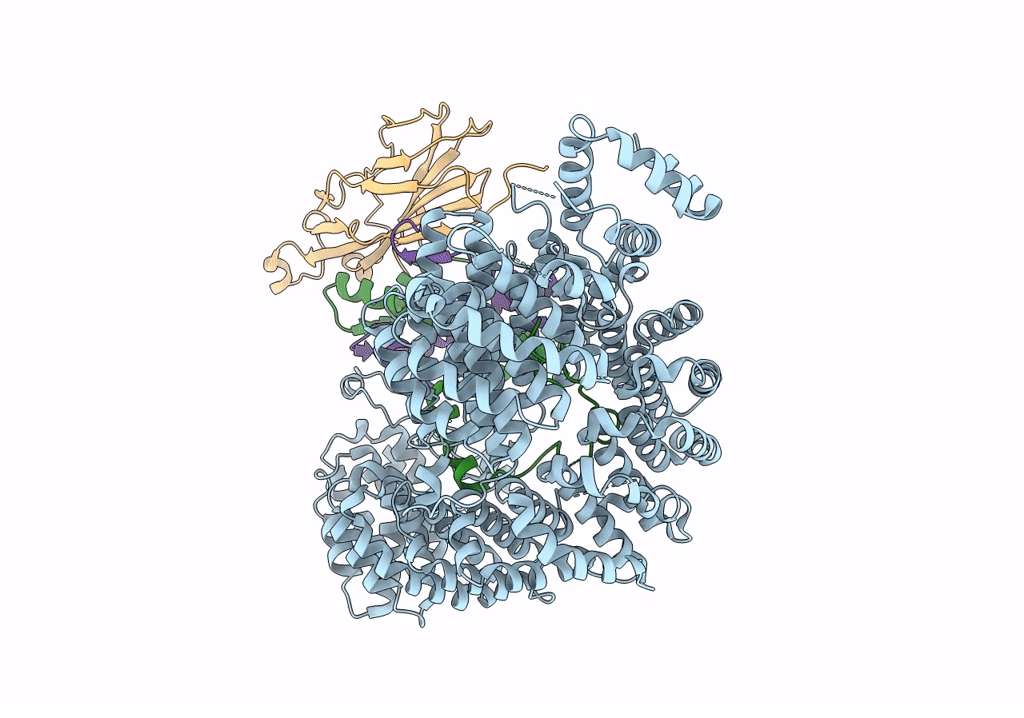
Deposition Date
2022-04-11
Release Date
2022-09-21
Last Version Date
2025-05-28
Entry Detail
PDB ID:
7UNK
Keywords:
Title:
Structure of Importin-4 bound to the H3-H4-ASF1 histone-histone chaperone complex
Biological Source:
Source Organism:
Homo sapiens (Taxon ID: 9606)
Xenopus laevis (Taxon ID: 8355)
Saccharomyces cerevisiae (Taxon ID: 4932)
Xenopus laevis (Taxon ID: 8355)
Saccharomyces cerevisiae (Taxon ID: 4932)
Host Organism:
Method Details:
Experimental Method:
Resolution:
3.45 Å
Aggregation State:
PARTICLE
Reconstruction Method:
SINGLE PARTICLE


